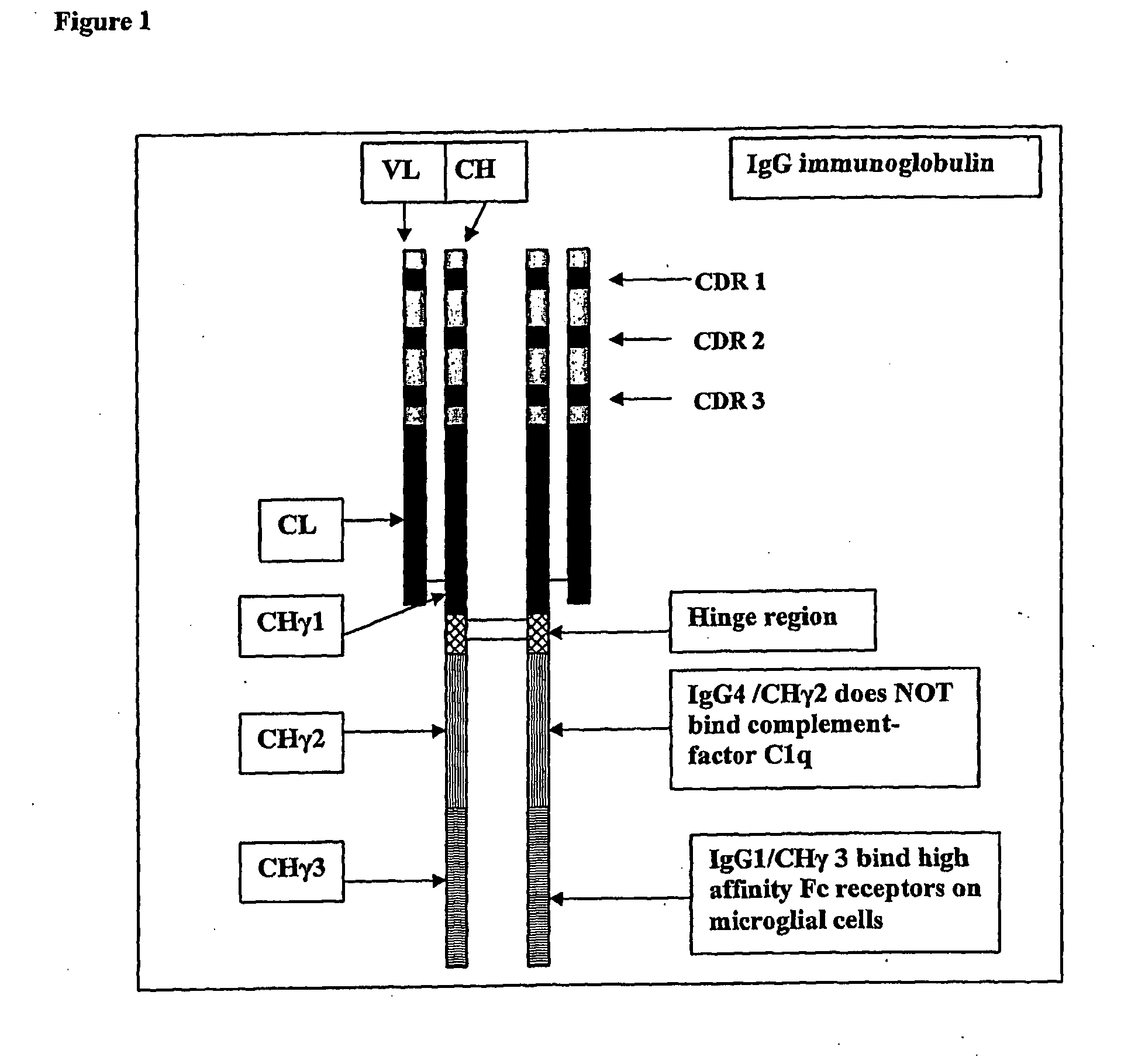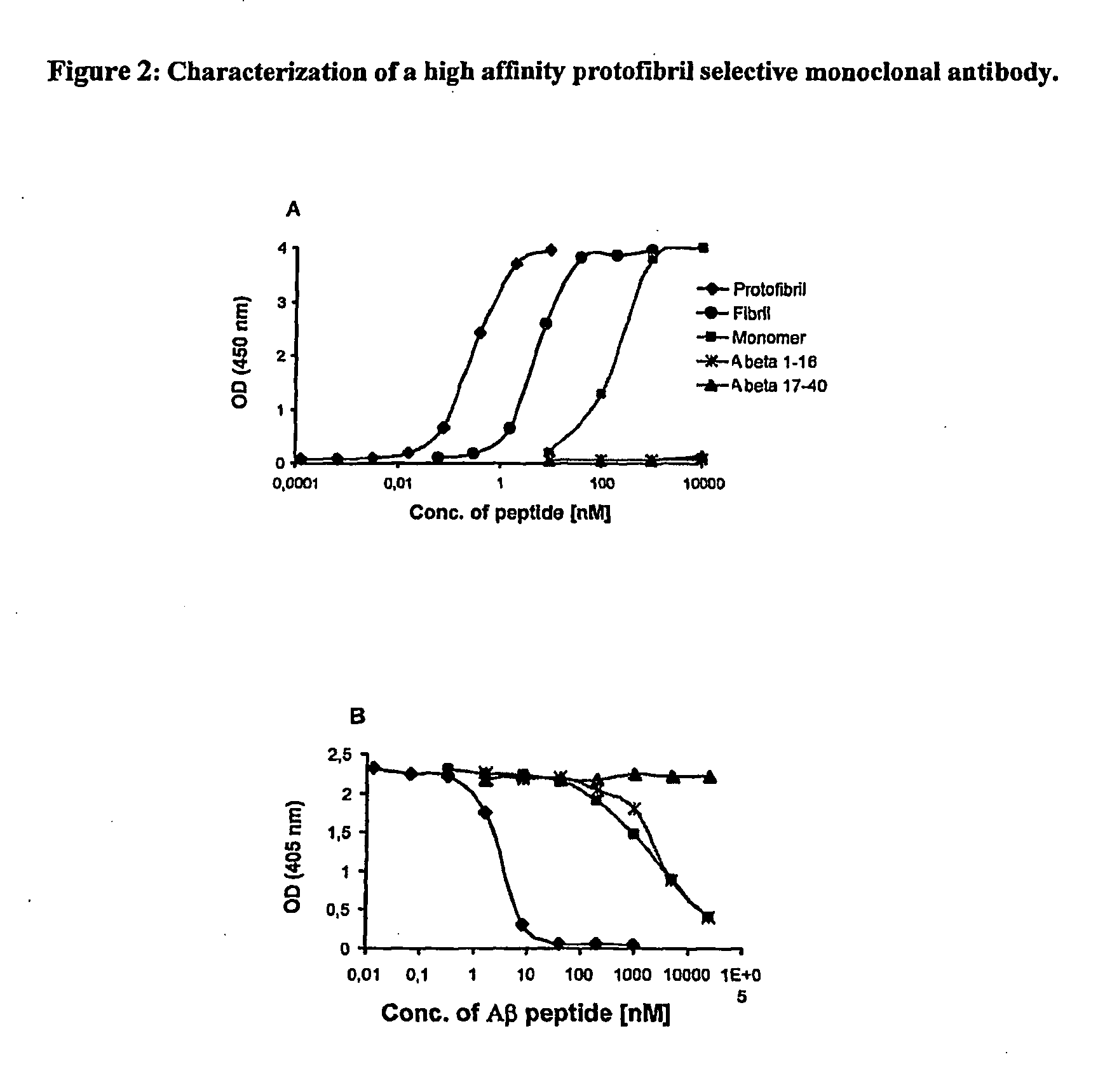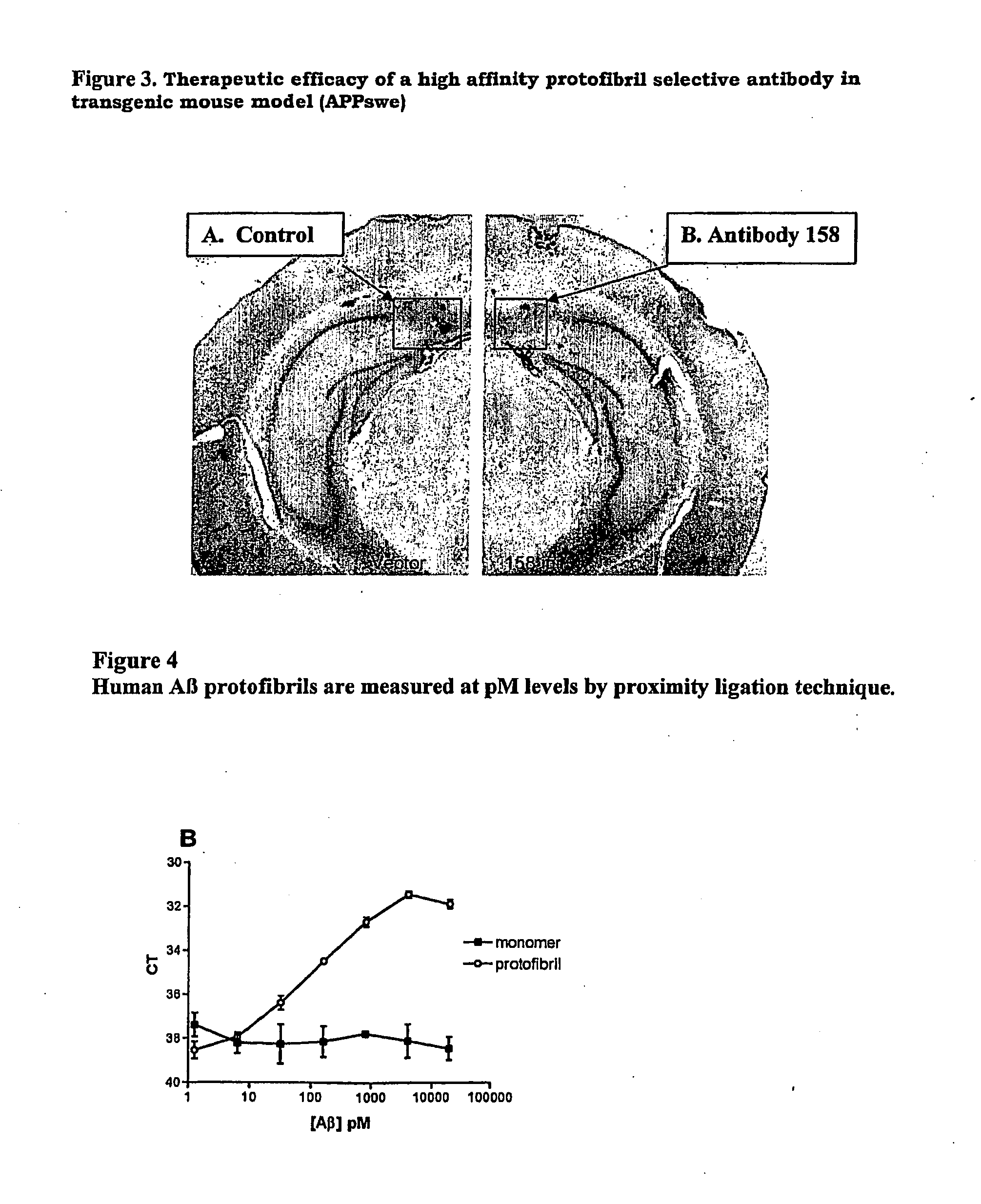Protofibril selective antibodies and the use thereof
a selective antibody and protofibril technology, applied in the field of neurodegenerative diseases prevention, treatment and diagnosis, to achieve the effect of reducing the activity of complement activation, and reducing the risk of side effects
- Summary
- Abstract
- Description
- Claims
- Application Information
AI Technical Summary
Benefits of technology
Problems solved by technology
Method used
Image
Examples
example 1
[0046]Human wild-type Aβ protofibril selective monoclonal antibodies were cloned and sequenced. The amino acid sequence of the variable heavy chain region (VH) and the variable light chain region (VL) are shown in Table 1. The positions of the CDR regions 1-3 are underlined and shown as well in Table 2 and 3. The amino acid sequences of the CDR regions form the structural basis for binding human wild-type Aβ protofibrils constituting the “Alzheimer disease epitope”.
[0047]The amino acid sequence of the CDR regions 1-3 of the VL and VH chains for a high affinity protofibril specific antibody BA9 / 158 is shown in Table 1, 2 and 3. Sequencing data of other protofibril selective antibodies (BA2, BA3, BA4 and BA7) provide alternative amino acids sequences of the CDR regions but not limited to these. The combined amino acid sequences of the CDR1-3 regions of the VH and VL chains create the molecular “pocket” which binds human Aβ wild-type protofibrils with high affinity and specificity. Thi...
example 2
Characterization of an High-Affinity Human Aβ Wild-Type Profibril Selective Monoclonal Antibody by ELISA
[0052]Example 2 shows a high affinity protofibril selective antibody that cross-reacts a 200-1000-fold less with Aβ monomers and less than 40-fold with Aβ fibrils, as measured by a sandwich ELISA (FIG. 2A). From competitive ELISA experiments, the antibody has a strong affinity for human Aβ42 wild-type protofibrils, but only very weak affinity for the N-terminal part of the Aβ peptide and Aβ monomers. No binding was observed to the C-terminal fragment of Aβ (FIG. 2B). Furthermore, the antibody does not cross-react with other types of amyloids, like medin or transthyretin. Furthermore the antibody does not recognize human APP, the abundant precursor of Aβ.
[0053]In FIG. 2A a sandwich ELISA is shown. Antibody 158 was coated in the wells and different Aβ forms subsequently added to the well in increasing concentrations. Measurement of bound Aβ forms was made by adding biotinylated mAb ...
example 3
[0055]The efficacy of high affinity Aβ protofibril selective antibody was determined in an Alzheimer transgenic mouse model (APPswe) by an acute intracranial injection. Transgenic mice used for efficacy evaluation express human APP, with the Swedish mutation (APPSwe). In this paradigm, antibodies are injected directly into plaque-rich regions of the brain parenchyma and effects on neuropathology are assessed after 72 hours (Wilcock et al., 2003). Other studies have shown that the direct application of anti-Aβ antibodies results in a rapid clearance of amyloid deposits in vivo (Bacskai et al, 2001; Brendza et al., 2005). The injection of high affinity Aβ protofibril selective antibody leads to a significant plaque reduction in the APPSwe mouse model (FIG. 3).
[0056]In FIG. 3 the therapeutic efficacy of a high affinity protofibril selective antibody in transgenic mouse model (APPswe) was tested. A: A 14 months old APPSwe transgenic mouse was intracranially injected with PBS and B: high...
PUM
| Property | Measurement | Unit |
|---|---|---|
| Fraction | aaaaa | aaaaa |
| Volume | aaaaa | aaaaa |
| Volume | aaaaa | aaaaa |
Abstract
Description
Claims
Application Information
 Login to View More
Login to View More - R&D
- Intellectual Property
- Life Sciences
- Materials
- Tech Scout
- Unparalleled Data Quality
- Higher Quality Content
- 60% Fewer Hallucinations
Browse by: Latest US Patents, China's latest patents, Technical Efficacy Thesaurus, Application Domain, Technology Topic, Popular Technical Reports.
© 2025 PatSnap. All rights reserved.Legal|Privacy policy|Modern Slavery Act Transparency Statement|Sitemap|About US| Contact US: help@patsnap.com



